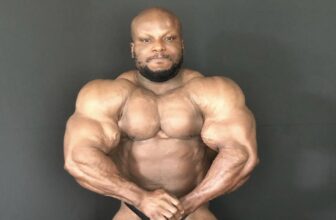The Supreme Court docket dominated that Campbell’s soup can painter Andy Warhol violated a photographer’s copyright when he borrowed from her 1981 portrait of Prince. It’s a case that can have sweeping implications for mental property legislation within the US.
Photographer Lynn Goldsmith sued the Warhol Foundation, arguing that the pop artist infringed on her copyright when he made a silkscreen print utilizing certainly one of her images. You don’t should pay the unique artist if it’s truthful use, which is set based mostly on four factors: the aim you’re utilizing it for, the character of the artwork, how considerably you used the unique work, and the way your new artwork impacts the marketplace for the unique. On this case, the query got here right down to the definition of the phrase objective.
The court docket discovered that Warhol’s silkscreen wasn’t truthful use as a result of the 2 artistic endeavors have been each commissioned for journal articles about Prince. It might have gone one other approach; the Warhol Foundation argued the needs of the 2 works have been completely different as a result of they despatched a unique message, specifically that Warhol’s portrait made a creative touch upon capitalism and celeb, whereas the unique photograph was only a photograph that confirmed what Prince regarded like.
The Court docket selected to disregard the query of the artwork’s message. A number of Justices fretted over the concept that judges may need to be artwork critics through the case’s listening to. Equally, the court docket threw out the logic of a earlier Second Circuit ruling, which centered on the truth that the 2 artworks are aesthetically related.
Justice Sonia Sotomayor wrote within the Court docket’s opinion that the aim is the essential query, and on this case, using each works is “of a industrial nature.” Sotomayor wrote the Warhol Foundation “supplied no different persuasive justification for its unauthorized use of the {photograph}.”
The ruling is slender. Sotomayor wrote that the identical argument wouldn’t apply to a lot of Warhol’s different works. Whereas Goldsmith and Warhol’s prince photographs have been each for journal illustrations, Warhol’s well-known soup cans “makes use of Campbell’s copyrighted work for a creative commentary on consumerism,” Sotomayor wrote. Basically, artwork created for {a magazine} is legally completely different from artwork created for a museum, even when two works would possibly in any other case be similar.
Whereas it doesn’t throw the doctrine truthful use out the window, even this slender ruling can have a dramatic impression on inventive work. Justice Elena Kagan and Chief Justice John Roberts disagreed with the opposite seven Justices. In a dissenting opinion, Kagan wrote that “As a result of the artist had such a industrial objective, all of the creativity on the planet couldn’t save him,” she wrote. The ruling “hampers inventive progress and undermines inventive freedom,” Kagan wrote, as a result of it creates new monetary risks for artists who need to use present work.
Trending Merchandise

Cooler Master MasterBox Q300L Micro-ATX Tower with Magnetic Design Dust Filter, Transparent Acrylic Side Panel…

ASUS TUF Gaming GT301 ZAKU II Edition ATX mid-Tower Compact case with Tempered Glass Side Panel, Honeycomb Front Panel…

ASUS TUF Gaming GT501 Mid-Tower Computer Case for up to EATX Motherboards with USB 3.0 Front Panel Cases GT501/GRY/WITH…

be quiet! Pure Base 500DX Black, Mid Tower ATX case, ARGB, 3 pre-installed Pure Wings 2, BGW37, tempered glass window

ASUS ROG Strix Helios GX601 White Edition RGB Mid-Tower Computer Case for ATX/EATX Motherboards with tempered glass…










